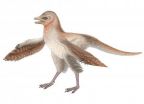(Press-News.org) Several studies have found evidence that children who undergo repeated surgical operations with general anesthesia before the age of 4 may be at an increased risk for learning disabilities. In the March issue of Anesthesiology, Massachusetts General Hospital (MGH) researchers report an animal study indicating that several factors – age, the specific anesthetic agent used and the number of doses – combine to induce impairments in learning and memory accompanied by the inflammation of brain tissue. An accompanying paper from the same team finds that the offspring of mice that received a specific anesthetic gas during pregnancy also showed the effects of neuroinflammation and impaired learning. Both articles have been released online.
"We found that different anesthetic drugs – sevoflurane but not desflurane – had different effects on neuroinflammation and on learning and memory function in young mice," says Zhongcong Xie, MD, PhD, corresponding author of both studies and director of the Geriatric Anesthesia Research Unit in the MGH Department of Anesthesia, Critical Care and Pain Medicine. "If they are confirmed by future studies in animals and humans, these findings would suggest that some anesthetics may be safer than others in young children and indicate ways to reduce risks."
In the first study – co-led by Xia Shen, MD, PhD, and Yuanlin Dong, MD, MS, both of MGH Anesthesia – the investigators treated two groups of 6-day-old mice with sevoflurane, the most commonly used general anesthetic. One group received a single two-hour dose of the drug, while the other received the same dose on three subsequent days. In a standardized assessment of learning and memory conducted 24 days later, the mice that had received three doses did significantly less well than a control group at learning the location of a platform in a shallow pool of water and then remembering where the platform had been after it was removed. Analysis of their brain tissue showed elevated levels of several markers of inflammation.
Mice that received only one dose of sevoflurane showed neither neuroinflammation nor cognitive impairment compared with the control group. No adverse effects were seen in either adult mice that received three doses of sevoflurane or in young mice that received three doses of desflurane, another commonly used anesthetic. Two strategies – preanesthesia treatment with an anti-inflammatory drug and placing the young animals in an enriched environment – cages that featured ladders, wheels and mazes – each appeared to reduce the negative effects of three doses of sevoflurane.
The second study – co-led by Hui Zheng, MD, PhD, of MGH Anesthesia and Dong – exposed a group of pregnant female mice to a single two-hour dose of sevoflurane when two-thirds through the gestation period. In assessments conducted 30 days after the females gave birth, offspring of those that received sevoflurane showed evidence of impaired learning and memory, compared with a control group. In addition, analysis of the brain tissue of fetal mice, taken right after the pregnant mice received the sevoflurane dose, and of month-old offspring showed elevated inflammatory markers and other signs of neurotoxicity – including a reduction in the number of brain synapses – compared with control offspring. As in the first study, placing a group of anesthesia-exposed pregnant mice and then their offspring into an enriched environment appeared to reduce both the neuroinflammatory and behavioral effects on the offspring of prenatal exposure to sevoflurane.
"Six million children undergo surgery each year in the U.S., and the possibility that anesthesia and surgery could increase the risk for learning disabilities is a major concern for both the medical community and the general public," says Xie, an associate professor of Anesthesia at Harvard Medical School. "We hope our findings will promote more research into anesthesia neurotoxicity in the developing brain, ultimately leading to safer anesthesia care and better postoperative outcomes for children." Support for both studies includes grants R21AG029856, R21AG038994, R01GM088801 and R01AG041274 from the National Institutes of Health, along with grants from the Alzheimer's Association and the Cure Alzheimer's Fund and support from the MGH Department of Anesthesia, Critical Care and Pain Medicine.
###Massachusetts General Hospital, founded in 1811, is the original and largest teaching hospital of Harvard Medical School. The MGH conducts the largest hospital-based research program in the United States, with an annual research budget of more than $750 million and major research centers in AIDS, cardiovascular research, cancer, computational and integrative biology, cutaneous biology, human genetics, medical imaging, neurodegenerative disorders, regenerative medicine, reproductive biology, systems biology, transplantation biology and photomedicine. In July 2012, MGH moved into the number one spot on the 2012-13 U.S. News & World Report list of "America's Best Hospitals."
Neuroinflammation may be behind general-anesthesia-associated learning disabilities
Animal studies suggest that type of anesthetic used, number of exposures and age contribute to risk of inflammation, cognitive deficits
2013-01-24
ELSE PRESS RELEASES FROM THIS DATE:
Urban metabolism for the urban century
2013-01-24
New Haven, Conn.–Like organisms, cities need energy, water, and nutrients, and they need to dispose of wastes and byproducts in ways that are viable and sustainable over the long run. This notion of "urban metabolism" is a model for looking systematically at the resources that flow into cities and the wastes and emissions that flow out from them—to understand the environmental impacts of cities and to highlight opportunities for efficiencies, improvements, and transformation.
Yale University's Journal of Industrial Ecology is pleased to announce a special issue on Sustainable ...
New dinosaur fossil challenges bird evolution theory
2013-01-24
The discovery of a new bird-like dinosaur from the Jurassic period challenges widely accepted theories on the origin of flight.
Co-authored by Dr Gareth Dyke, Senior Lecturer in Vertebrate Palaeontology at the University of Southampton, the paper describes a new feathered dinosaur about 30 cm in length which pre-dates bird-like dinosaurs that birds were long thought to have evolved from.
Over many years, it has become accepted among palaeontologists that birds evolved from a group of dinosaurs called theropods from the Early Cretaceous period of Earth's history, around ...
Sun shoots out 2 coronal mass ejections
2013-01-24
VIDEO:
This movie shows two coronal mass ejections (CMEs) erupting from the sun on Jan. 23, 2013. The first was not directed at Earth; the second one is, but is not...
Click here for more information.
On Jan. 23, 2013, at 9:55 a.m. EST, the sun erupted with an Earth-directed coronal mass ejection, or CME. Experimental NASA research models, based on observations from the Solar Terrestrial Relations Observatory (STEREO) and ESA/NASA's Solar and Heliospheric Observatory, show ...
Valuing nature is not enough
2013-01-24
Is it possible to put a price tag on the natural world? A researcher at The University of Nottingham has been examining the rise of a new concept — ecosystem services — to describe the multitude of resources supplied to us by Mother Nature.
Academic Dr Marion Potschin, of the University's Centre for Environmental Management, is among an international team of researchers who have been investigating the ethical considerations of this new concept, which some have argued turns nature into a 'commodity'.
In a paper published in the journal BioScience, Dr Potschin and her ...
Cells 'flock' to heal wounds
2013-01-24
Like flocks of birds, cells coordinate their motions as they race to cover and ultimately heal wounds to the skin. How that happens is a little less of a mystery today.
Researchers once thought only the cells at the edge of a growing patch of wounded skin were actively moving while dividing cells passively filled in the middle. But that's only part of the picture. Rice University physicist Herbert Levine and his colleagues have discovered that the process works much more efficiently if highly activated cells in every part of the patch exert force as they pull their neighbors ...
UCI neuroscientists create fiber-optic method of arresting epileptic seizures
2013-01-24
Irvine, Calif., Jan. 24, 2013 — UC Irvine neuroscientists have developed a way to stop epileptic seizures with fiber-optic light signals, heralding a novel opportunity to treat the most severe manifestations of the brain disorder.
Using a mouse model of temporal lobe epilepsy, Ivan Soltesz, Chancellor's Professor and chair of anatomy & neurobiology, and colleagues created an EEG-based computer system that activates hair-thin optical strands implanted in the brain when it detects a real-time seizure.
These fibers subsequently "turn on" specially expressed, light-sensitive ...
Mouse menopause model sheds light on UTIs in post-menopausal women
2013-01-24
Researchers from Washington University School of Medicine, St. Louis, show that reservoirs of uropathogenic E. coli within the bladder exist in higher numbers post-menopause than pre-menopause in a mouse model, a finding that could help explain the greater prevalence of urinary tract infections in post-menopausal women. They also found that estrogen supplementation reduced the numbers of such reservoirs dramatically. The research was published online ahead of print in the journal Infection and Immunity.
Urinary tract infections (UTIs) afflict an estimated 13 million ...
Vocabulary instruction failing US students
2013-01-24
EAST LANSING, Mich. — Vocabulary instruction in the early years is not challenging enough to prepare students for long-term reading comprehension, argues a study led by a Michigan State University education researcher.
The study, which appears in Elementary School Journal, analyzed commonly used reading curricula in U.S. kindergarten classrooms. It found that, generally, the programs do not teach enough vocabulary words; the words aren't challenging enough; and not enough focus is given to make sure students understand the meaning of the words.
"Vocabulary instruction ...
Research: Lupus drugs carry no significant cancer risk for patients
2013-01-24
This press release is available in French.
Montreal, January 24, 2013 – People who take immunosuppressive drugs to treat lupus do not necessarily increase their cancer risk according to new research led by scientists at the Research Institute of the McGill University Health Centre (RI-MUHC). This landmark study, which was published in Annals of the Rheumatic Diseases this month, addresses long-standing fears of a link between lupus medication and cancer.
Systemic lupus erythematosus (SLE), commonly known as lupus, is an autoimmune disease in which the body's immune ...
Female mice exposed to BPA by mothers show unexpected characteristics
2013-01-24
ANN ARBOR—Female mice exposed to Bisphenol A through their mother's diet during gestation and lactation were found to be hyperactive, exhibit spontaneous activity and had leaner body mass than those not exposed to the chemical, researchers at the University of Michigan School of Public Health have discovered.
BPA is a chemical most commonly found in the lining of food cans and cash register receipts. It once was in many hard plastic bottles, including baby bottles, but many companies have removed it as concerns about exposure have come to light in recent years.
These ...
LAST 30 PRESS RELEASES:
Making lighter work of calculating fluid and heat flow
Normalizing blood sugar can halve heart attack risk
Lowering blood sugar cuts heart attack risk in people with prediabetes
Study links genetic variants to risk of blinding eye disease in premature infants
Non-opioid ‘pain sponge’ therapy halts cartilage degeneration and relieves chronic pain
AI can pick up cultural values by mimicking how kids learn
China’s ecological redlines offer fast track to 30 x 30 global conservation goal
Invisible indoor threats: emerging household contaminants and their growing risks to human health
Adding antibody treatment to chemo boosts outcomes for children with rare cancer
Germline pathogenic variants among women without a history of breast cancer
Tanning beds triple melanoma risk, potentially causing broad DNA damage
Unique bond identified as key to viral infection speed
Indoor tanning makes youthful skin much older on a genetic level
Mouse model sheds new light on the causes and potential solutions to human GI problems linked to muscular dystrophy
The Journal of Nuclear Medicine ahead-of-print tip sheet: December 12, 2025
Smarter tools for peering into the microscopic world
Applications open for funding to conduct research in the Kinsey Institute archives
Global measure underestimates the severity of food insecurity
Child survivors of critical illness are missing out on timely follow up care
Risk-based vs annual breast cancer screening / the WISDOM randomized clinical trial
University of Toronto launches Electric Vehicle Innovation Ontario to accelerate advanced EV technologies and build Canada’s innovation advantage
Early relapse predicts poor outcomes in aggressive blood cancer
American College of Lifestyle Medicine applauds two CMS models aligned with lifestyle medicine practice and reimbursement
Clinical trial finds cannabis use not a barrier to quitting nicotine vaping
Supplemental nutrition assistance program policies and food insecurity
Switching immune cells to “night mode” could limit damage after a heart attack, study suggests
URI-based Global RIghts Project report spotlights continued troubling trends in worldwide inhumane treatment
Neutrophils are less aggressive at night, explaining why nighttime heart attacks cause less damage than daytime events
Menopausal hormone therapy may not pose breast cancer risk for women with BRCA mutations
Mobile health tool may improve quality of life for adolescent and young adult breast cancer survivors
[Press-News.org] Neuroinflammation may be behind general-anesthesia-associated learning disabilitiesAnimal studies suggest that type of anesthetic used, number of exposures and age contribute to risk of inflammation, cognitive deficits


